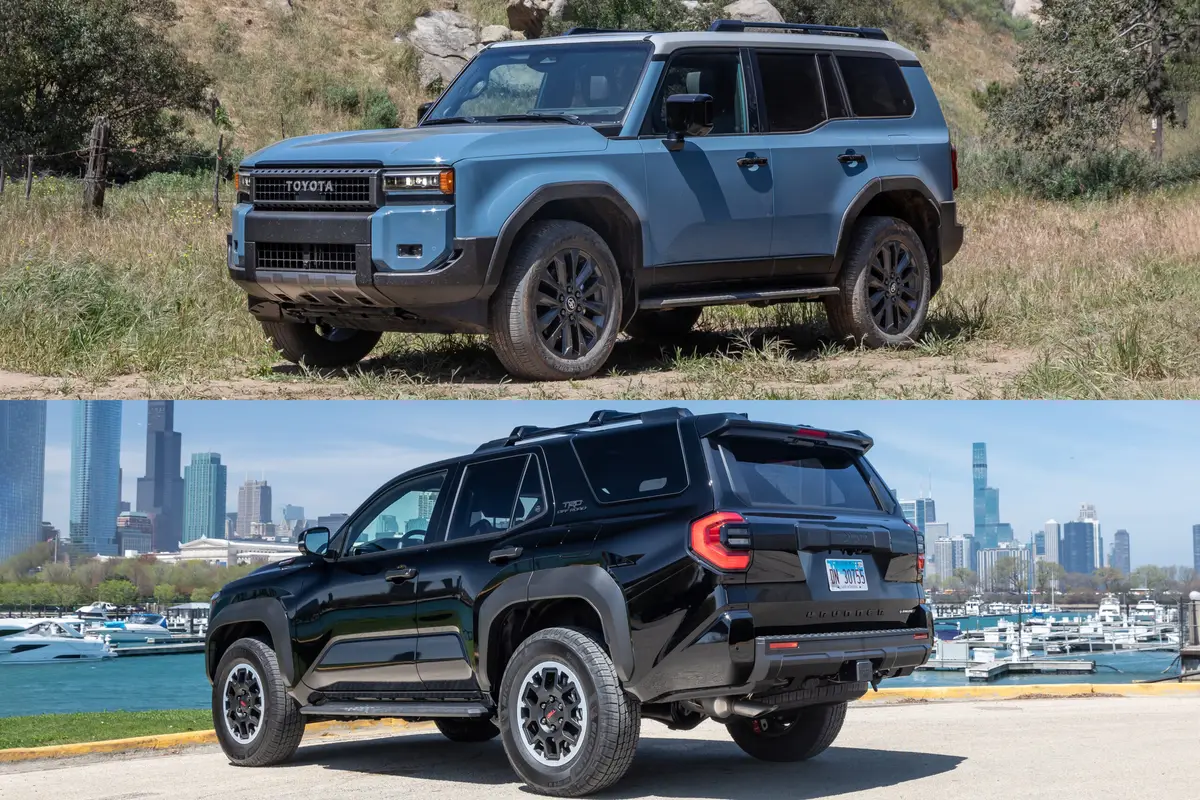How Do Car Seats Fit in a 2018 Toyota Highlander?

Editor’s note: This Car Seat Check was written in September 2017 about the 2017 Toyota Highlander. Little of substance has changed with this year’s model. To see what’s new for 2018, click here, or check out a side-by-side comparison of the two model years.
For 2017, Toyota updated its Highlander three-row SUV with lightly tweaked styling, a new powertrain for enhanced performance and better fuel economy as well as more additional standard safety features. The 2017 Highlander has seven or eight seats depending on the configuration. For this Car Seat Check, we tested a model with second-row captain’s chairs, making for a capacity of seven.
How many car seats fit in the second row? Two
How many car seats fit in the third row? Two, but only one can be a forward-facing convertible, as the Highlander’s third row has only one top tether anchor and room is tight.
Related: More Car Seat Checks
Solid
- Latch, grade A: In the second row, the two sets of lower anchors are exposed and easy to use. The two top tether anchors sit a third of the way down the seatbacks; they’re clearly marked and connection wasn’t an issue.
- Infant, grade A: Easy to install; good fit. Our 5-foot-6-inch front passenger had ample legroom.
- Rear-facing convertible, grade A: Easy to install; good fit. Our 5-foot-6-inch front passenger had ample legroom.
- Forward-facing convertible, grade A: This seat fit well after we raised the head restraint.
So-So
- Booster, grade B: In the second row, the booster fit well after we raised the head restraint, but floppy buckles that slide into pouches will likely make it more difficult for kids to buckle up independently.
- Third-row access, grade B: The captain’s chairs move with ease at the pull of a lever, but the opening is small.
- Third-row forward-facing convertible, grade B: We removed the head restraint for a better fit and used the seat belt to install the seat since there are no lower Latch anchors in the third row. One seat belt strap comes down from the ceiling, blocking the driver’s view, and because the third row’s sole top tether anchor is in the middle position, we needed to install the seat there.
- Third row booster, grade B: It fit well after we removed the head restraint, but floppy buckles will likely make it more difficult for kids to buckle up independently.
Skip It
- None
Grading Scale
Solid indicates an A grade for optimum ease of use and fit. So-So indicates B or C grades for one to two ease-of-use or fit issues. Skip It indicates D or F grades.
A: Plenty of room for the car seat and the child; doesn’t impact driver or front-passenger legroom. Easy to find and connect to Latch and tether anchors. No fit issues involving head restraint or seat contouring. Easy access to the third row.
B: One room, fit or connection issue. Some problems accessing third row when available.
C: Marginal room plus one fit or connection issue. Difficult to access third row when available.
D: Insufficient room, plus multiple fit or connection issues.
F: Does not fit or is unsafe.
About Cars.com’s Car Seat Checks
Editors Jennifer Geiger, Jennifer Newman and Matt Schmitz are certified child safety seat installation technicians.
For the Car Seat Check, we use a Graco SnugRide Classic Connect 30 infant-safety seat, a Britax Marathon convertible seat and Graco TurboBooster seat. The front seats are adjusted for a 6-foot driver and a shorter passenger. The three child seats are installed in the second row. The booster seat sits behind the driver’s seat, and the infant and convertible seats are installed behind the front passenger seat.
We also install the forward-facing convertible in the second row’s middle seat with the booster and infant seat in the outboard seats to see if three car seats will fit; a child sitting in the booster seat must be able to reach the seat belt buckle. If there’s a third row, we install the booster seat and a forward-facing convertible. Learn more about how we conduct our Car Seat Checks.
Parents should also remember that they can use the Latch system or a seat belt to install a car seat, and that Latch anchors have a weight limit of 65 pounds, including the weight of the child and the weight of the seat itself.
Cars.com’s Editorial department is your source for automotive news and reviews. In line with Cars.com’s long-standing ethics policy, editors and reviewers don’t accept gifts or free trips from automakers. The Editorial department is independent of Cars.com’s advertising, sales and sponsored content departments.

News Editor Jennifer Geiger joined the automotive industry in 2003, much to the delight of her Corvette-obsessed dad. Jennifer is an expert reviewer, certified car-seat technician and mom of three. She wears a lot of hats — many of them while driving a minivan.
Featured stories



